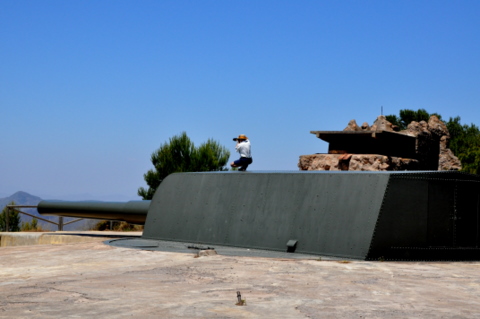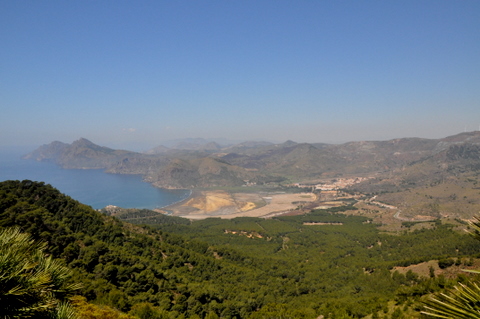article_detail
The gun batteries of Las Cenizas and Negrete in the mountains near Cartagena
Early 20th century defence fortifications around the port of Cartagena

Due to its sheltered natural harnour and the valuable mineral deposits nearby, Cartagena has always been an important port and strategical location and the doorway to inland and sea trade. Settled by a succession of cultures and civilizations, the city has been coveted and attacked for centuries, and over the years the defensive fortifications have been continually modified as technology changed the face of warfare.
The First World War resulted in huge military technological advances, which rendered Cartagena's defences obsolete and in 1926, the national Plan de Defensa para Bases Navales called for the construction of a new defence system comprising 44 elements surrounding Cartagena, giving it full protection against attacks from air, land and sea.

The Cenizas Battery was built between 1930 and 1934, the major part of the construction being the access which leads up from the road below, which had to be cleared, cut and re-enforced in order to bring up the massive Vickers 381mm guns, designed to keep enemy shipping away from the coastline.
These landed in Portmán Bay prior to the open-cast mining which silted up the bay we see today and were brought along the back of the bay on a specially built rail track before being dragged up the hill by teams of mules.
Weighing 88 tons each, the two guns were built in the Vickers-Armstrong factory in Sheffield in 1923, and their massive 18.6-metre gun barrels were capable of firing projectiles of almost a ton over a distance of 35 km.

 Although the Vickers guns were never called into active service they were instrumental in deterring the Nationalist fleet from attacking Cartagena, which was in the hands of the Republicans.
Although the Vickers guns were never called into active service they were instrumental in deterring the Nationalist fleet from attacking Cartagena, which was in the hands of the Republicans.
The battery remained in active service until 1994 when it was officially decommissioned and since then has fallen into a sad state of repair.
It’s still owned by the Ministry of Defence but visitors can wander around the ruins of the gun emplacements, munitions stores and military accommodation at will. The buildings are all built in a neoclassical modernist style, which was popular in Cartagena during the 1930’s.
The main gate, an extraordinary structure in it's own right, is believed to have been inspired by Mayan ruins, and from there visitors can go straight up to the Cenizas battery or follow a track which leads to the Negrete anti-aircraft battery, about 300 metres away.
The Negrete Battery

This Negrete battery protected not only the Cenizas Battery but also the La Chapa Battery at Portmán, and was fitted with four Vickers 105mm 45-calibre anti-aircraft guns with a range of nearly 13km. The battery was very busy during the Spanish Civil War, when two of the pieces were dismantled and moved to Sierra Gorda and Los Dolores, then in 1952 the remaining 2 pieces also went to Los Dolores.
After this the site was decommissioned and fell into disrepair.
Access
 The batteries are high up on the Monte de las Cenizas, which is in included in a protected natural park area, and are reached via the original military road.
The batteries are high up on the Monte de las Cenizas, which is in included in a protected natural park area, and are reached via the original military road.
The final stretch can only be negotiated on foot and takes approximately 40 minutes, sloping gently upwards through pine forests. It's well worth the effort as the guns are such a great photo opportunity!
From the MU-312, take the exit for the La Manga Club, then drive on straight through the club, heading for Portmán. The road widens out with a green cycle lane, and the main entrance is just past the sign for Llano del Beal.
However, there is no parking here, so take the right hand turn for Llano del Beal and there is a car park on the left. From here it’s a 3km walk up the hill to the Battery.
Please note, there are no services at the batteries and it is necessary to carry water and wear strong, practical shoes.
Contact Spanish News Today: Editorial 966 260 896 /
Office 968 018 268































